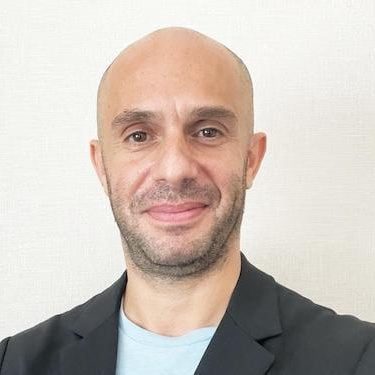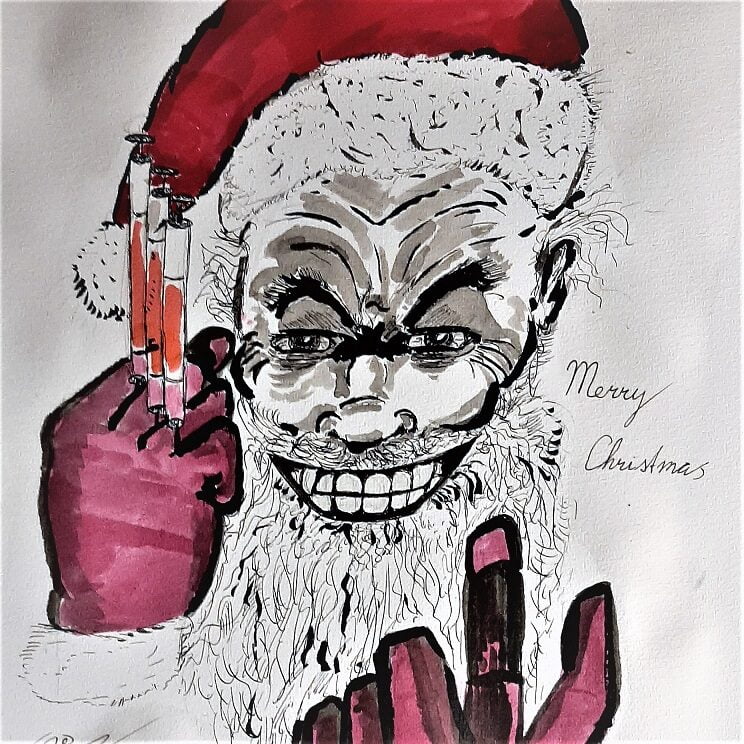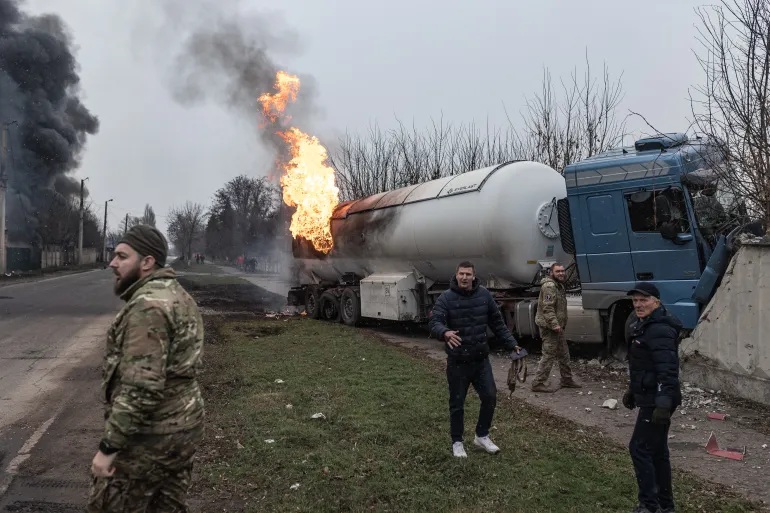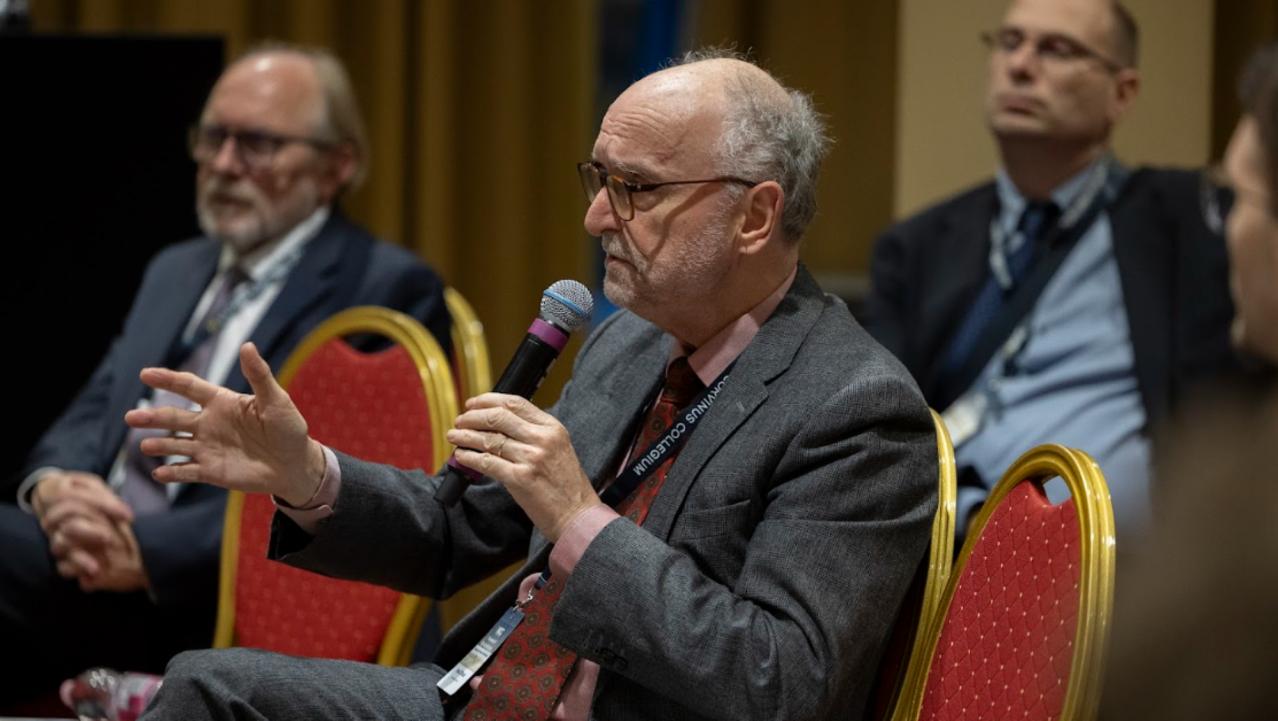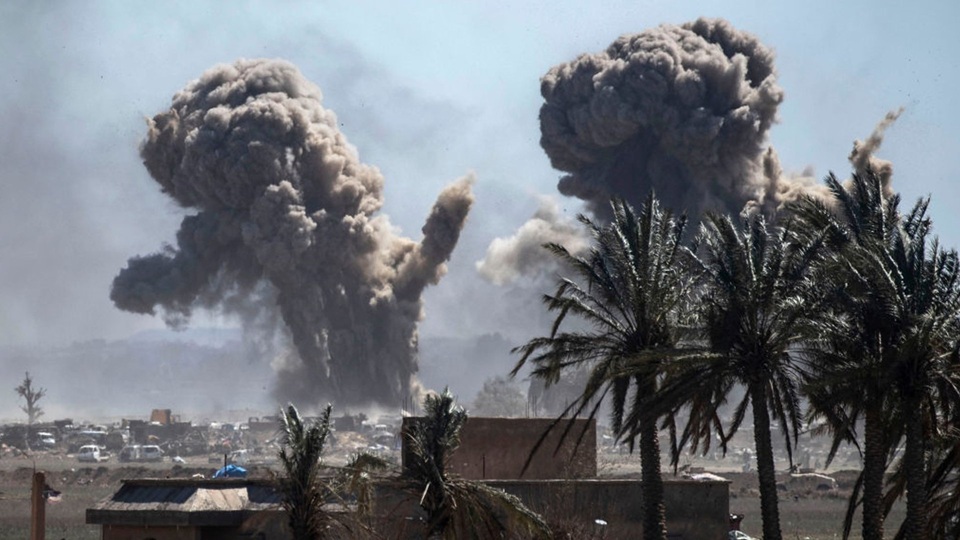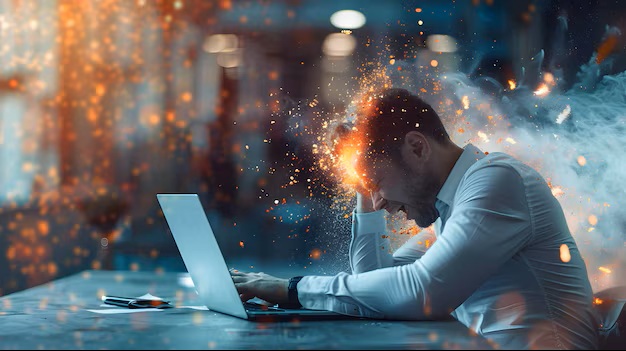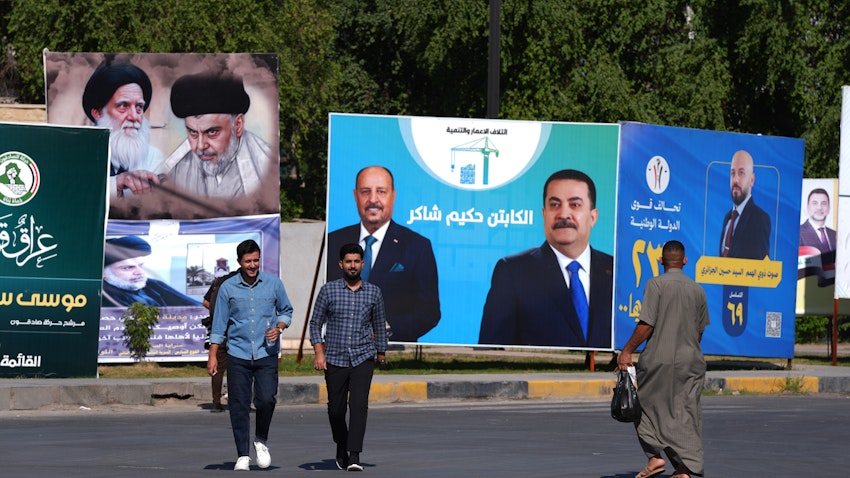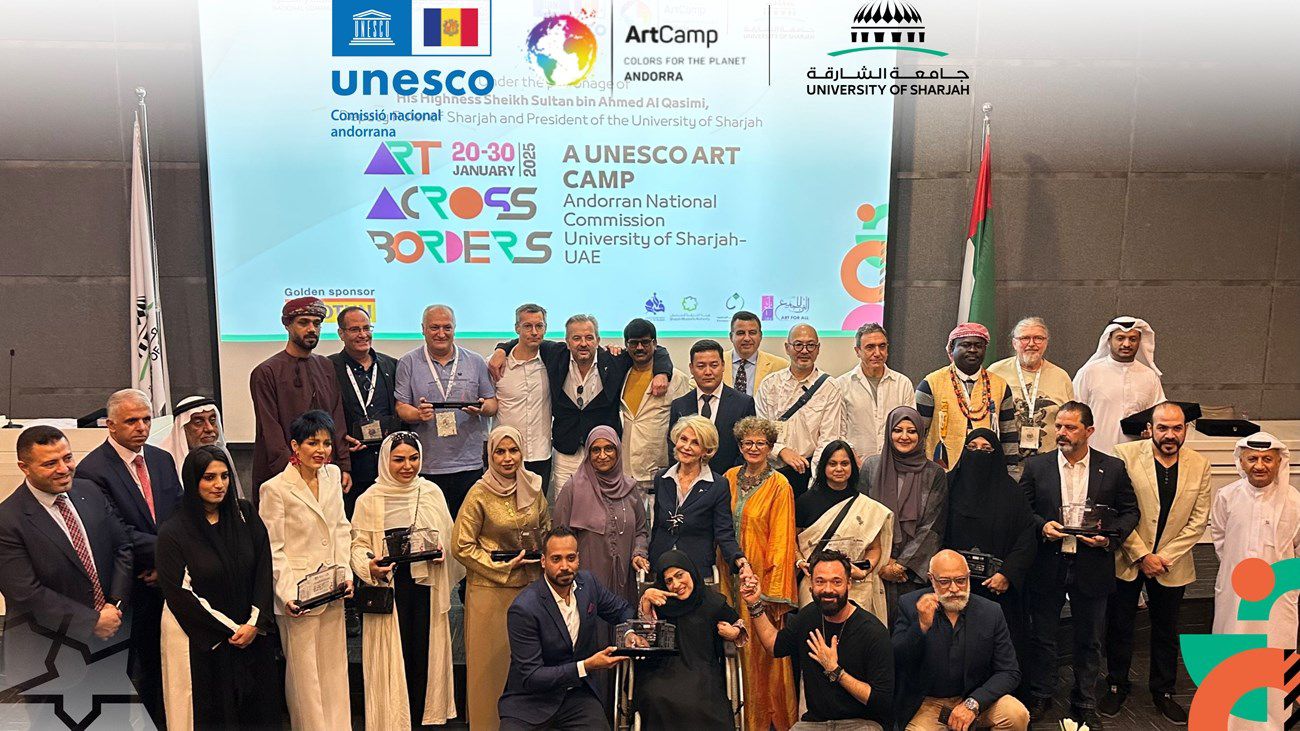
Twenty-two distinguished artists from the Middle East, Africa, and Europe gathered at Sharjah University in January for an artistic exchange. A project under the umbrella of UNESCO aimed to build bridges and foster dialogue among people from conflict countries. The initiative focuses on artistic and cultural exchange. “Art unites people,” said Madame Hedva Ser (UNESCO's Goodwill Ambassador for Cultural Diplomacy) the godmother of the project.
By Arthur Blok
There is something universal about art. Its unifying power reaches beyond words, directly to the core of who we are. Art can create an environment to expose people to different perspectives. From that foundation, art has the power to build dialogue among those with differing beliefs.
The UNESCO Andorra Art Camp held its edition at Sharjah University under the theme of Colours for the Planet. It brought together individuals from various conflict regions, allowing them to share living spaces and collaborate on art projects. For example, a previous project gathered participants from Palestine and Israel who lived and worked together, drawing significant attention due to its unprecedented nature.
Beninese Artist Franck Hantan from Benin explained it beautifully: “It is the art of finding a common point, a shared direction, in the diversity of our journeys. When our eyes meet, it is not a simple exchange but a promise of building together, despite our differences, a more harmonious future.”
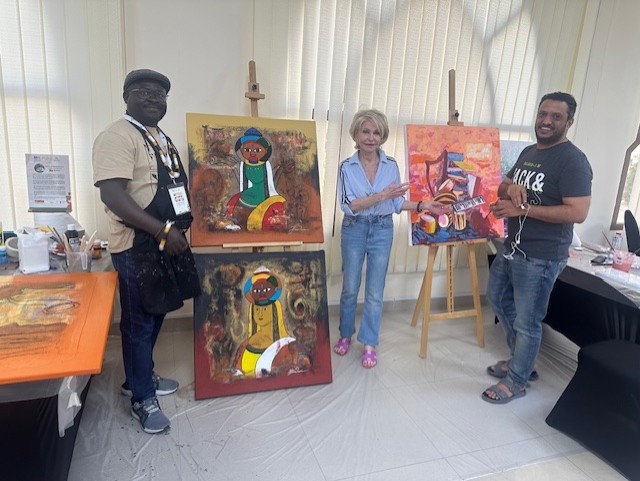
Through his artistic work, he seeks to capture the dynamic of a world darkened by crisis. Hantan combines his roots, where voodoo tradition plays a role, with the quest for common answers. He creates a space where opposite views can meet, understand each other, and unite.
This also resonates in the work of Maltese artist Adrian Scicluna, who focuses on how environments shape human behaviour and how human actions construct and define spaces. His work is a continuous dialogue between external surroundings and internal experiences, often using memory and mind maps to translate this into visual narratives.
The Organisers
One of the thriving forces is Sumra Salis, the child of Lebanese immigrants who came to Australia in the 1950s. In 2006, he moved to Andorra. In 2008, he started working with the Andorran National Commission for UNESCO. He began assisting with the project in 2010 after Secretary-General Jean Michel Armengol, with the assistance of Andorran National artist Faust Campana as art curator. Armengol was also at the Art Camp in Sharjah.
“Jean Michel launched the biannual initiative to facilitate an artistic, cultural exchange. It is to bring together artists from conflict countries and painting together collectively”, Sallis said.
That is a job well done, which directly becomes evident after walking through the colourful gallery of the displayed artworks. The result is an eloquent mix of artwork that immediately captures the eye and triggers conversations with the artists.
Madame Hedva Ser, the project’s godmother, has been on board since 2012. Ser had a pivotal input in bringing people from Palestine and Israel together. “This had never happened before; it made some people quite worried”, she said.
“Once you bring people together with a common aim and a dialogue for human rights, they realise they are similar, especially in art. It unites people”, the project’s godmother proudly added.
Sallis further explained that the Sharjah project includes artists from North Africa, Slovenia, Malta, and India, focusing primarily on the Middle East. “We have previously organised similar camps in Andorra, a tiny country. The location where we host this art camp, Ordino, is in a village of about 800 people. Sami Al Syabi from Oman was invited to it a few years ago.”
When visiting the village, Al Syabi proudly wore his traditional Omani clothing. The villagers duly noticed that. In Oman, men wear a dishdasha (a collarless long-sleeved garment), a wizar (a woven hip wrap) worn underneath it, a head covering, and a khanjar (a short curved blade shaped like the letter "J" and resembling a hook) around the waist with a belt.
Sallis: “I remember that one of the first days, I said, where are you going? Then he said, I'm going for a walk. I said, sure, okay, can I follow you?”
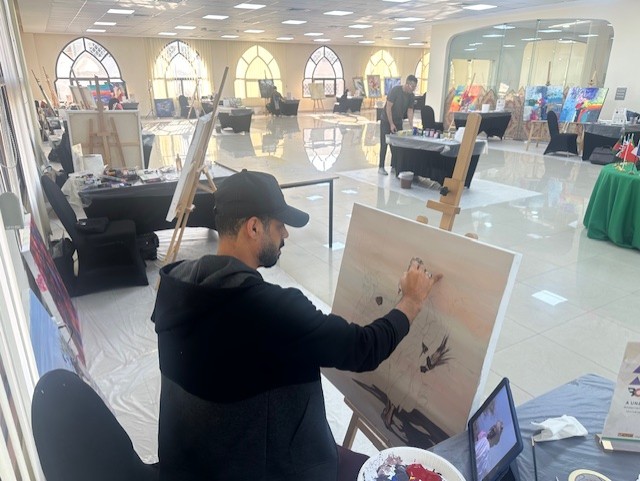
When he walked down the village's main street, plates and glasses fell on the ground. People initially panicked. They'd never seen a black man in such clothes. At a certain moment, all the children started running towards him.
Al Syabi about that day: “They were touching me; they thought I was Aladdin. This scene repeated itself in the days to come. Every day I went out, many children approached me with their parents to say hi or take photos. They had never met someone who looked like me. It was wonderful.”
The project emphasises the importance of shared goals and dialogue centred around human rights, leading participants to discover their similarities despite their differences. The project also includes cultural presentations where artists share elements of their cultures, further enhancing mutual understanding and appreciation.
That is precisely how one could describe the work of Lebanese artist Wael Hamadeh, who gives Lebanese folklore, history, and nature an essential role in his artwork. The glory his country once represented in the Levant is like a red thread in all his artwork.
“I am so proud to represent my country at such an important intercultural art event, where minds are connected. Art expressions are a beautiful way to lower barriers, bring people from troubled regions together, and connect their minds”, he said.
The UNESCO Art Camp Exhibition at the University of Sharjah has no entrance fee and runs until mid-February.
The work of the following artists will be on display, including: Dr Karima Alshomely (UAE, “The Lone Falcon”), Mona Al Khaja (UAE “The Mother of Art”), Salem Al Jneibi (UAE “The Cultural Bridge”), Faezeh Mohammed (UAE/Iran “The Persian Pearl”), Gonzalo Rodríguez Gómez (Spain “The Andalusian Soul”), Loize Kalinsek (Slovenia “The Orthodox Icon”), Zheng Zhihong (China “The Nostalgic Dragon”), Jivan Hovhannisyan (Armenia “The Horse Whisperer”) Neveen Abu Samra (Poland/Palestine “The Face of Nations”), Labiba Ferhat (Algeria “The Desert Queen”), Sami Al Syabi (Oman) – “The Bedouin Realist”, Asan Parmanov (Tajikistan “The Mountain Painter”), Wael Kamel Hamadeh (Lebanon “The Artistic Cedar”), Atul Panase (India “The Ink Sage”), Lipika Das (India “The People’s Painter”), Frank Hantan (Benin “The Joyful Griot”), Adrian Scicluna (Malta “The Still Life Dreamer”), Dr. Thomas Stollar (USA “The Clay Professor”), Moza Abdullah bin Ziban (UAE “The Pattern Guardian”), Abeer Al Iedani (Iraq “The Surrealist Visionary”), Mohammed Hussein (Egypt “The Artistic Pharaoh”), and local influencer Sacha Jafri.
